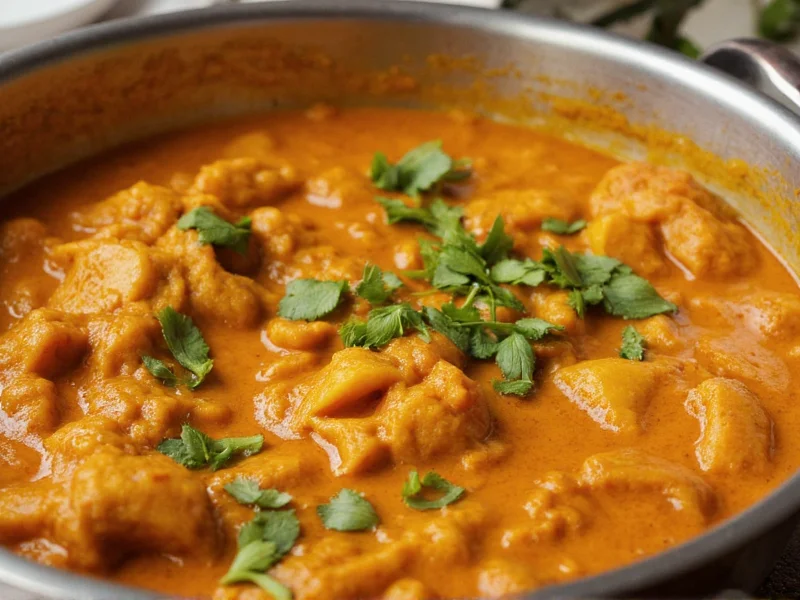Understanding the relationship between curry and turmeric begins with recognizing their fundamental differences. Turmeric is a rhizome in the ginger family, scientifically known as Curcuma longa, prized for its deep orange flesh and earthy, slightly bitter flavor profile. Curry, conversely, isn't a single ingredient but rather a culinary tradition encompassing hundreds of regional dishes across South Asia and beyond, typically featuring complex spice blends. While turmeric frequently appears in curry recipes, it's just one component among many—including coriander, cumin, fenugreek, and chili peppers—that create curry's distinctive flavor profile.
The Botanical Identity of Turmeric
Turmeric grows in tropical climates and has been cultivated for over 4,000 years in Southeast Asia. The part used as a spice is the rhizome (underground stem), which is boiled, dried, and ground into the familiar yellow powder. Fresh turmeric root resembles ginger but delivers a more complex flavor profile with citrus and peppery notes alongside its earthiness. This versatile spice serves multiple purposes beyond flavoring—traditional Ayurvedic medicine has utilized turmeric for millennia, and modern research increasingly validates many of these traditional uses.
Turmeric's Role in Curry Preparation
When examining how turmeric contributes to curry recipes, several key functions emerge:
| Function | Mechanism | Practical Impact |
|---|---|---|
| Coloration | Curcumin pigment | Creates signature golden-yellow hue in curry dishes |
| Flavor foundation | Earthy, slightly bitter compounds | Provides base note that balances other spices |
| Preservation | Antimicrobial properties | Extends shelf life of prepared dishes |
| Nutritional enhancement | Curcumin and other bioactive compounds | Contributes anti-inflammatory benefits to the meal |
Many traditional curry preparations begin with "tempering" spices—frying turmeric and other whole or ground spices in oil to release their essential oils and deepen their flavors before adding other ingredients. This technique maximizes both flavor development and the bioavailability of turmeric's beneficial compounds.
Scientifically Supported Health Benefits
The health benefits of turmeric in curry primarily stem from curcumin, which constitutes about 2-8% of turmeric by weight. Research indicates curcumin possesses significant anti-inflammatory and antioxidant properties. A comprehensive review published in Advances in Experimental Medicine and Biology concluded that curcumin demonstrates potential benefits for:
- Reducing inflammation markers in chronic conditions
- Supporting joint health and mobility
- Enhancing antioxidant enzyme activity
- Potentially supporting cognitive function
However, curcumin has low bioavailability on its own. This explains why traditional curry preparations often combine turmeric with black pepper (which contains piperine, increasing curcumin absorption by up to 2,000%) and healthy fats (which help dissolve curcumin's fat-soluble compounds).
Clarifying Common Misconceptions
Many people confuse curry powder and turmeric, but they're fundamentally different. Curry powder is a Western invention—a standardized spice blend created to approximate various regional Indian curry spice mixes. Turmeric typically comprises 15-25% of commercial curry powder blends, but authentic regional curry preparations use freshly ground whole spices in varying combinations.
Not all curry dishes contain turmeric. Southern Indian fish curries often omit it, while Thai curries use fresh turmeric root but rarely dried powder. The misconception that "curry" equals "yellow" stems from British colonial interpretations of Indian cuisine that favored milder, turmeric-heavy dishes.
Maximizing Turmeric's Benefits in Cooking
To get the most from turmeric in your cooking:
- Combine with black pepper—just 1/20th teaspoon of black pepper significantly enhances curcumin absorption
- Cook with healthy fats like coconut oil or ghee to improve solubility of curcumin
- Avoid excessive heat—prolonged high temperatures degrade curcumin
- Use fresh turmeric root when possible, which contains higher curcuminoid levels than dried powder
- Store properly—keep turmeric in an airtight container away from light to preserve potency
When incorporating turmeric into traditional curry recipes, consider starting with 1/2 to 1 teaspoon of ground turmeric per serving, adjusting based on the specific recipe's regional origin and your personal taste preferences. Remember that turmeric's flavor develops over time, so dishes often taste better the day after preparation.
Safety Considerations
Turmeric is generally safe when consumed in culinary amounts. However, extremely high doses (typically from supplements rather than food) may cause gastrointestinal discomfort in some individuals. People taking blood-thinning medications should consult their healthcare provider before significantly increasing turmeric intake, as curcumin may enhance the effects of these medications. Pregnant women should maintain normal culinary usage levels rather than consuming medicinal quantities.
Practical Integration into Daily Meals
You don't need to prepare elaborate curry dishes to benefit from turmeric. Simple applications include:
- Adding 1/4 teaspoon to scrambled eggs or tofu
- Stirring into soups or stews during the last 10 minutes of cooking
- Creating a golden milk beverage with warm milk, turmeric, black pepper, and honey
- Blending into salad dressings with lemon juice and olive oil
- Enhancing roasted vegetable dishes with a turmeric-ghee mixture
These approaches demonstrate how to incorporate turmeric into everyday meals without requiring specialized curry and turmeric recipe knowledge. The key is consistent, moderate consumption rather than occasional large doses.











 浙公网安备
33010002000092号
浙公网安备
33010002000092号 浙B2-20120091-4
浙B2-20120091-4